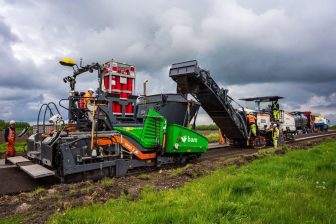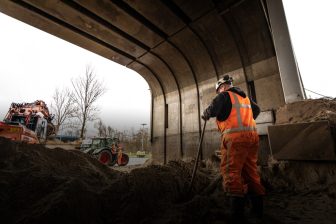Three European cities to save vehicle fuel consumption
Three cities (Salerno, Vienna and Gothenburg) have joined forces to test so-called “cooperative” mobility services systems in order to reduce the environmental footprint of the cities’ transport systems. These “cooperative” mobility services aim to reduce energy consumption through the use of ICT in transport. Cooperative mobility technologies enable a dialogue between vehicles, roadside infrastructure and other modes of transport.
Within the COSMO project, the cities of Salerno, Vienna and Gothenburg have agreed to implement a test bed for various cutting edge technologies developed in recent research programmes (CVIS, COOPERS, SAFESPOT). The pilots will mainly focus on eco-traffic management. Other types of services such as eco-driving support, co-modality, traffic sensitive street lighting and access management will also be addressed within the project.
These services have the potential to make road transport safer, smoother and less damaging to the environment. However information regarding their practical deployment and impact is still limited. COSMO is running real life demonstrations of these services with the aim to quantify their impact on fuel consumption and CO2 emission reduction, as well as to produce detailed specifications covering technical, legal and organisational implementation issues.
The project is adopting a system-wide approach to energy efficiency measurement, considering vehicle fuel consumption as well as the energy used by the infrastructure equipment and in the complete product life-cycle. Impacts on safety, traveller comfort and behaviour change are also part of the assessment.
Magnus Gunnarsson, Project Manager at Volvo Technology Corporation says: “In Gothenburg, the test site will be located along the main route of four different bus lines. Seven commercial buses are currently being equipped with 802.11p and 3G communication capabilities; road side units, similarly equipped, will be able to communicate directly with the buses and provide real time speed advice to prevent congestion at bus stops as well as also priority at traffic lights.”
“In Vienna, the test site is located on a section of the motorway between Baden and Kottingbrunn, with temporary road works, through which 80 000 cars pass every day. The first stage of testing has been underway for around a month and from the information provided by the motorway operator ASFINAG, and feedback from motorists via an online questionnaire, it has been possible to draw the following initial conclusions.
The use of the LED streetlights to illuminate the entry to the construction site area during hours of darkness has had a positive influence on driver comfort and personal safety. One of the positive consequences is that harsh braking shortly before changing lanes is avoided, leading to smoother throughput of cars (i.e. lower CO2 emissions) through the construction site.
The motorway operator has also reacted favourably. While the accident risk normally rises on fast roads such as this when lane shifts and width constrictions are implemented, the accident rate reported in the Austrian Pilot Site so far is similar to that in normal conditions (approx 0.1%)”, says Dr. Thomas Novak, Research Project Engineer at SWARCO Futurit.
Vincenzo Galdi, Associate Professor at the University of Salerno says: “In Salerno, COSMO tests the integration of urban ITS applications with the direct involvement of university staff and students. Every day, over 18 000 students and 1 200 staff reach the Campus generating typical problems of congested urban areas. We will test eco-driving support, multimodal real time information, adaptive street lighting linked to traffic control strategies, access and parking management systems to evaluate energy savings enabled through dynamic use of infrastructure.”
Tests in all Pilots will run between now and December 2012, with intermediate results in April 2012.
U las zojuist één van de gratis premium artikelen
Onbeperkt lezen? Profiteer nu van de introductieaanbieding voor € 10,- per maand.
Bent u al abonnee?




